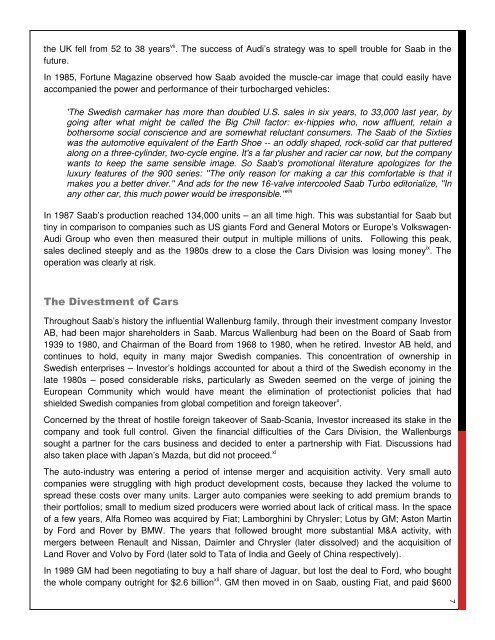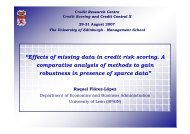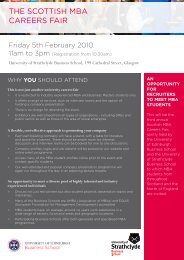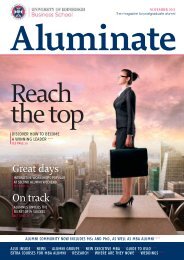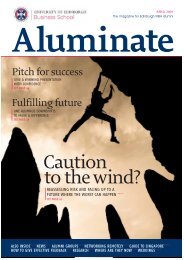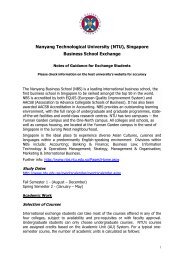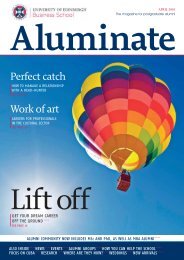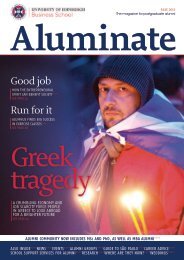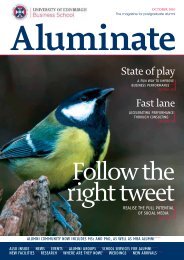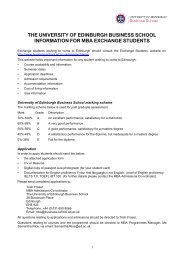killed Saab Automobile? - Business School - University of Edinburgh
killed Saab Automobile? - Business School - University of Edinburgh
killed Saab Automobile? - Business School - University of Edinburgh
You also want an ePaper? Increase the reach of your titles
YUMPU automatically turns print PDFs into web optimized ePapers that Google loves.
the UK fell from 52 to 38 years vii . The success <strong>of</strong> Audi’s strategy was to spell trouble for <strong>Saab</strong> in the<br />
future.<br />
In 1985, Fortune Magazine observed how <strong>Saab</strong> avoided the muscle-car image that could easily have<br />
accompanied the power and performance <strong>of</strong> their turbocharged vehicles:<br />
'The Swedish carmaker has more than doubled U.S. sales in six years, to 33,000 last year, by<br />
going after what might be called the Big Chill factor: ex-hippies who, now affluent, retain a<br />
bothersome social conscience and are somewhat reluctant consumers. The <strong>Saab</strong> <strong>of</strong> the Sixties<br />
was the automotive equivalent <strong>of</strong> the Earth Shoe -- an oddly shaped, rock-solid car that puttered<br />
along on a three-cylinder, two-cycle engine. It's a far plusher and racier car now, but the company<br />
wants to keep the same sensible image. So <strong>Saab</strong>'s promotional literature apologizes for the<br />
luxury features <strong>of</strong> the 900 series: ''The only reason for making a car this comfortable is that it<br />
makes you a better driver.'' And ads for the new 16-valve intercooled <strong>Saab</strong> Turbo editorialize, ''In<br />
any other car, this much power would be irresponsible.'' viii<br />
In 1987 <strong>Saab</strong>’s production reached 134,000 units – an all time high. This was substantial for <strong>Saab</strong> but<br />
tiny in comparison to companies such as US giants Ford and General Motors or Europe’s Volkswagen-<br />
Audi Group who even then measured their output in multiple millions <strong>of</strong> units. Following this peak,<br />
sales declined steeply and as the 1980s drew to a close the Cars Division was losing money ix . The<br />
operation was clearly at risk.<br />
The Divestment <strong>of</strong> Cars<br />
Throughout <strong>Saab</strong>’s history the influential Wallenburg family, through their investment company Investor<br />
AB, had been major shareholders in <strong>Saab</strong>. Marcus Wallenburg had been on the Board <strong>of</strong> <strong>Saab</strong> from<br />
1939 to 1980, and Chairman <strong>of</strong> the Board from 1968 to 1980, when he retired. Investor AB held, and<br />
continues to hold, equity in many major Swedish companies. This concentration <strong>of</strong> ownership in<br />
Swedish enterprises – Investor’s holdings accounted for about a third <strong>of</strong> the Swedish economy in the<br />
late 1980s – posed considerable risks, particularly as Sweden seemed on the verge <strong>of</strong> joining the<br />
European Community which would have meant the elimination <strong>of</strong> protectionist policies that had<br />
shielded Swedish companies from global competition and foreign takeover x .<br />
Concerned by the threat <strong>of</strong> hostile foreign takeover <strong>of</strong> <strong>Saab</strong>-Scania, Investor increased its stake in the<br />
company and took full control. Given the financial difficulties <strong>of</strong> the Cars Division, the Wallenburgs<br />
sought a partner for the cars business and decided to enter a partnership with Fiat. Discussions had<br />
also taken place with Japan’s Mazda, but did not proceed. xi<br />
The auto-industry was entering a period <strong>of</strong> intense merger and acquisition activity. Very small auto<br />
companies were struggling with high product development costs, because they lacked the volume to<br />
spread these costs over many units. Larger auto companies were seeking to add premium brands to<br />
their portfolios; small to medium sized producers were worried about lack <strong>of</strong> critical mass. In the space<br />
<strong>of</strong> a few years, Alfa Romeo was acquired by Fiat; Lamborghini by Chrysler; Lotus by GM; Aston Martin<br />
by Ford and Rover by BMW. The years that followed brought more substantial M&A activity, with<br />
mergers between Renault and Nissan, Daimler and Chrysler (later dissolved) and the acquisition <strong>of</strong><br />
Land Rover and Volvo by Ford (later sold to Tata <strong>of</strong> India and Geely <strong>of</strong> China respectively).<br />
In 1989 GM had been negotiating to buy a half share <strong>of</strong> Jaguar, but lost the deal to Ford, who bought<br />
the whole company outright for $2.6 billion xii . GM then moved in on <strong>Saab</strong>, ousting Fiat, and paid $600<br />
7


